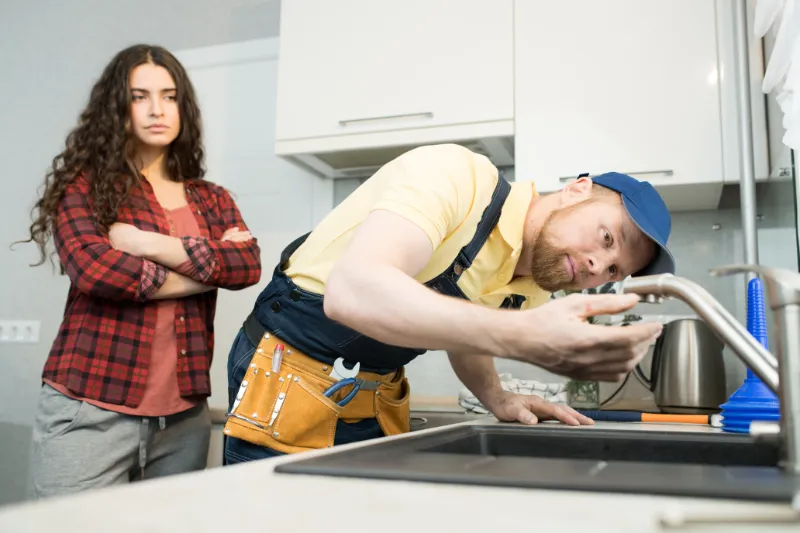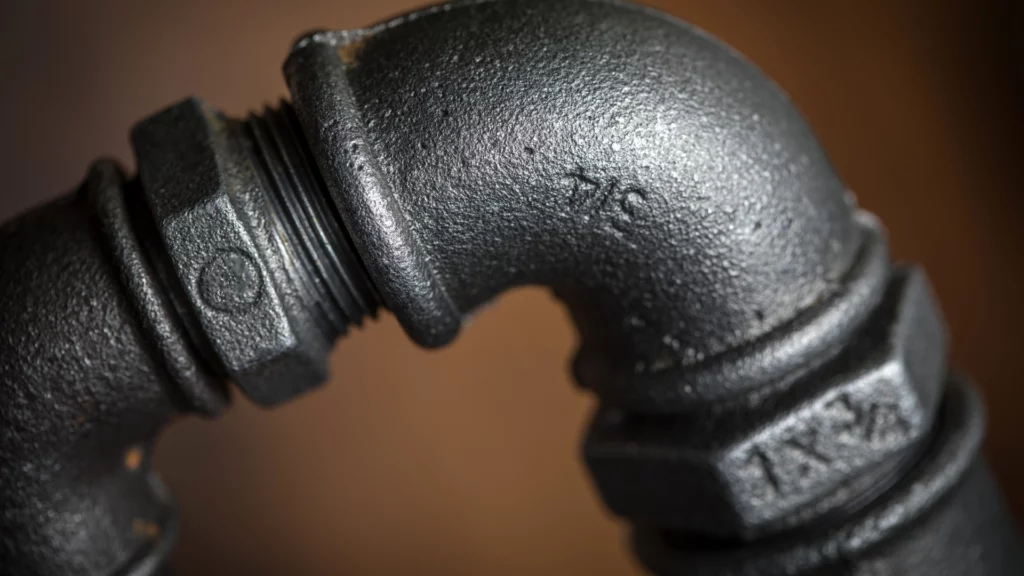Contents
Are you wondering why the term ‘do it yourself’ is commonly referred to as DIY when it comes to plumbing your house?
In this article, we’ll explore the origin of DIY in home improvement and its evolution over time. We’ll also discuss the pros and cons of DIY versus hiring a professional, as well as how DIY plumbing can save you money.
Stay tuned for tips and best practices to help you tackle your plumbing projects with confidence.
Key Takeaways
- DIY in home improvement emerged in the 1950s as a way to save money, learn new skills, and feel accomplished.
- DIY plumbing offers cost savings by eliminating labor costs and avoiding hidden fees associated with hiring a professional.
- Thorough research, necessary tools, and safety guidelines are crucial for successful DIY plumbing.
- While DIY plumbing allows for complete control over the project, it is important to know your limitations and when to call a professional for guidance or assistance.
The Origin of DIY in Home Improvement
If you’re curious about the origin of DIY in home improvement, you’ll be interested to know that the term first emerged in the 1950s. During this time, there was a growing desire among individuals to take control of their own home improvement projects. People wanted to save money, learn new skills, and feel a sense of accomplishment by completing tasks themselves. This desire to serve oneself and take on tasks independently gave rise to the concept of DIY in home improvement.
The 1950s marked a significant shift in society, with an increased emphasis on self-sufficiency and personal responsibility. As the post-war era brought about economic prosperity, many families were able to afford homes and were eager to make them their own. However, hiring professionals for every home improvement project was seen as expensive and unnecessary. People began to realize that they could tackle these tasks themselves with a little guidance and the right tools.
The term ‘DIY’ quickly gained popularity as a way to describe this new trend of doing things yourself. It became a symbol of empowerment and self-reliance in home improvement. DIY enthusiasts shared their knowledge and experiences through magazines and books, creating a community of like-minded individuals eager to learn and share their skills.
Today, the DIY movement has expanded beyond home improvement and encompasses a wide range of activities, from crafting and gardening to cooking and even building furniture. It continues to be a popular and fulfilling way for people to serve themselves and others, saving money, learning new skills, and finding satisfaction in their own accomplishments.
DIY: A Brief History and Evolution
To understand the history and evolution of DIY, let’s take a closer look at its origins and how it has transformed over time. DIY, or Do It Yourself, has always been about empowering individuals to take matters into their own hands and accomplish tasks on their own.
Here is a brief rundown of how DIY has evolved:
- The Rise of the Home Improvement Movement: In the early 20th century, the DIY movement gained momentum as people started to take an interest in improving their homes. With the availability of tools and materials becoming more accessible, homeowners began tackling projects such as painting, carpentry, and basic repairs.
- The Emergence of DIY Culture: In the 1950s and 1960s, the DIY culture began to flourish. This was fueled by the publication of DIY magazines, the advent of home improvement television shows, and the increasing availability of affordable tools and materials. People started to embrace the idea of self-reliance and took pride in their ability to complete projects on their own.
- The Digital DIY Revolution: With the rise of the internet and social media, the DIY movement has experienced a significant shift. Online platforms and communities have allowed individuals to share their DIY projects, provide tutorials, and connect with others who share their passion for hands-on work. This has created a supportive and inspiring environment for those seeking to learn new skills and tackle ambitious projects.
As DIY continues to evolve, it remains a powerful force that empowers individuals to take control of their surroundings and serve others. Whether it’s fixing a leaky faucet, building a piece of furniture, or renovating an entire room, the DIY spirit enables people to create, learn, and grow while serving their own needs and those of their communities.
DIY Vs. Hiring a Professional: Pros and Cons
What does DIY mean in plumbing? When plumbing a house, weighing the pros and cons of DIY versus hiring a professional can help you make an informed decision. Both options have their advantages and disadvantages, and it’s important to consider your skills, time, and budget before making a choice.
One of the main advantages of DIY plumbing is cost savings. By doing the work yourself, you can eliminate labor costs and potentially save a significant amount of money. Additionally, DIY plumbing allows you to have complete control over the project and make decisions based on your preferences.
However, DIY plumbing also comes with potential drawbacks. Firstly, plumbing work can be complex and challenging, requiring specialized knowledge and skills. If you lack experience or expertise in plumbing, you may make mistakes that could result in costly repairs or even damage to your property. Moreover, DIY plumbing can be time-consuming, especially if you need to learn new skills or troubleshoot unexpected issues along the way.
On the other hand, hiring a professional plumber has its own set of advantages. Professional plumbers have the necessary training and experience to handle a wide range of plumbing issues efficiently and effectively. They can quickly diagnose problems, provide expert advice, and offer long-lasting solutions. Hiring a professional also saves you time and effort, as they’ll take care of all the necessary permits, materials, and tools.
However, hiring a professional plumber can be expensive, especially for major plumbing projects. The cost of labor and materials can quickly add up, potentially exceeding your budget. Additionally, you may have to wait for an available appointment, especially during peak seasons when plumbers are in high demand.
How DIY Plumbing Can Save You Money
Save money on your plumbing project by doing it yourself. DIY plumbing can be a cost-effective way to solve common plumbing issues in your home. Here are three reasons why taking on the task yourself can save you money:
- Avoiding labor costs: By doing the plumbing work yourself, you eliminate the need to hire a professional plumber and pay their hourly rate. Plumbing services can be expensive, and tackling the project on your own can significantly reduce your overall costs.
- Lower material expenses: When you hire a professional plumber, they often charge a markup on the materials they use. By doing the plumbing work yourself, you have the option to shop around for the best deals on materials and save money in the process. Additionally, you can choose budget-friendly options without compromising on quality.
- No hidden fees: Hiring a professional plumber often comes with additional costs such as service fees, consultation charges, and emergency rates. By doing the plumbing work yourself, you can avoid these hidden fees and have more control over your budget.
When taking on a plumbing project yourself, it’s essential to do thorough research, gather the necessary tools, and follow safety guidelines. Additionally, if you ever feel overwhelmed or unsure, it’s always wise to consult a professional plumber for guidance.
DIY Plumbing: Tips and Best Practices
If you’re tackling a DIY plumbing project, it’s important to follow these tips and best practices to ensure success and avoid costly mistakes.
First and foremost, always prioritize safety. Before starting any plumbing work, make sure to turn off the water supply to the area you’ll be working on. This will prevent any accidental flooding or water damage. Additionally, wear protective gear such as gloves and safety goggles to protect yourself from potential hazards.
Next, it’s crucial to have the right tools for the job. Invest in a good quality plumbing toolkit that includes wrenches, pliers, pipe cutters, and a pipe wrench. Having the proper tools will make the job easier and more efficient.
When it comes to DIY plumbing, thorough planning is key. Before starting the project, take the time to research and understand the plumbing system in your house. Identify the problem areas and come up with a detailed plan of action. This will save you time and frustration in the long run.
Another important tip is to know your limitations. While it’s great to tackle DIY projects, it’s equally important to know when to call a professional. If the plumbing issue seems complex or beyond your expertise, don’t hesitate to seek professional help. Attempting to fix a problem that you’re not qualified for can lead to further damage and costly repairs.
Lastly, always remember to double-check your work. After completing a plumbing task, inspect the area for any leaks or signs of malfunction. This will ensure that your work is done correctly and prevent any future issues.
Conclusion
In conclusion, DIY plumbing can be a cost-effective and fulfilling option for homeowners. With the right knowledge, tools, and precautions, tackling plumbing projects yourself can save you money and provide a sense of accomplishment.
However, it’s important to weigh the pros and cons of DIY versus hiring a professional, and to always prioritize safety.
Whether you choose to take on plumbing tasks yourself or hire a professional, maintaining a well-functioning plumbing system is essential for a comfortable home.




